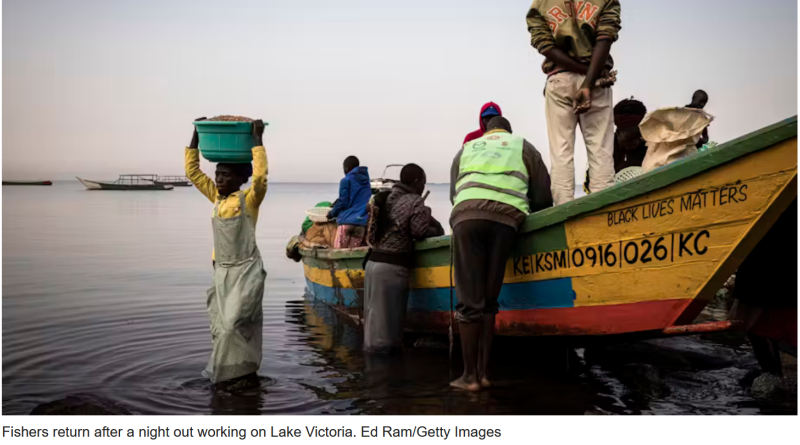Small-scale fishers on Lake Victoria (Africa’s largest freshwater lake, shared by Kenya, Tanzania and Uganda) are drowning. Safety issues such as storms, a lack of available life jackets, and a shortage of navigational equipment and rescue services are a major cause of this.
Existing studies have found that climate change is projected to increase the frequency and intensity of thunderstorms in east Africa. One of the places that will be affected is Lake Victoria, with thunderstorms becoming much more windy, with more intense rain, and up to 10 times more frequent by 2100. This will make the lake one of the most dangerous stretches of water in the world for small-scale fishers
We are socio-environmental scientists who research the fisheries around Lake Victoria and the impact of environmental change on livelihoods and security of food and nutrition. We conducted research on the connection between extreme weather events – heavy rain, strong winds, rough water – and drownings among the 48,000 small-scale fishers on the Kenyan side of Lake Victoria.
After reviewing the logs of drownings in that area, we interviewed the officials who were familiar with how each fisher had drowned. We also looked at how often heavy rain, strong wind, rough water, lack of navigation equipment or life jackets, the inability to swim, use of alcohol or drugs and poor boat maintenance were cited as causes of drowning.
The cause of the drownings is complex. Fishers are having to go deeper into the lake (where the best catches are) and fish at night for sardine-like omena (which is found deeper into the lake and is a night catch). This is because Nile perch, a fish that can be caught in the day, has been depleted. Night fishing is much more risky because that’s when the lake is rougher (with storms occurring) and rescues are much more challenging.
With climate change causing an increase in bad weather on the lake, the problem of fisher drownings is likely to increase. It is important that governments take urgent steps to make Lake Victoria safer for small-scale fishers. These fishers are the main income earners in their families and their tragic drownings jeopardise the livelihoods of hundreds of thousands of their family members, who would be more vulnerable to poverty.
What we found
At nearly 70,000 square kilometres, Lake Victoria is the largest freshwater lake in Africa, spanning three countries and fished by more than 200,000 people. The fishers mostly fish from small boats, which are unlikely to be stable in heavy storms.
These fishers already face a high risk of drowning. Up to 1,500 fishers drown on Lake Victoria every year, an estimated 1,000 of them during bad weather. We identified 141 fisher drowning deaths across 43 landing sites. Our study found that most of the fishers who drowned were men aged under 40.
Bad weather conditions, including rough water, strong wind and heavy rainfall, were described as the cause in 42% of recent fisher drowning deaths. While boats were generally in good repair, navigation equipment and life jackets were rarely made available by the boat owners despite Kenyan laws requiring life jackets. This increased the drowning rate: 69% of the fishers who drowned in storms were not wearing life jackets.






